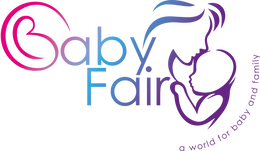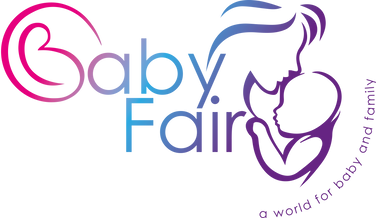How to clean baby's toys: A complete guide

As a parent or caregiver, your role in keeping your baby's toys clean is crucial for maintaining a safe and healthy environment. Babies explore the world by touching and tasting everything around them, making their toys a prime target for dirt, germs, and bacteria. Regularly cleaning toys helps prevent the spread of illnesses and keeps them in good condition for longer.
Since babies have developing immune systems, your efforts in maintaining hygiene are crucial to ensuring their well-being. Proper cleaning methods can eliminate harmful bacteria while preserving the toys' longevity.
It's important to remember that different toys require different cleaning techniques based on their material and usage. Some toys, like plush or fabric-based ones, can accumulate dust and allergens, while bath toys can harbour mould if not dried properly.
Hard plastic and wooden toys also require special attention to prevent bacteria buildup. This guide will equip you with the best methods for cleaning different baby toys effectively and safely, ensuring a germ-free play environment for your little one.
How Often Should You Clean Baby's Toys?
The frequency of cleaning depends on how often your baby uses the toy and the material it is made of:
- Daily Cleaning: Toys your baby frequently puts in their mouth should be wiped down or washed daily.
- Weekly Cleaning: Hard plastic toys, bath toys, and plush toys used regularly should be cleaned at least once weekly.
- After Sickness: If your baby has been sick, disinfect their toys immediately to prevent the spread of germs.
- Occasional Deep Cleaning: Not frequently used toys can be cleaned once a month.
Cleaning Different Types of Baby Toys
Plastic Toys
Plastic toys are the easiest to clean because they can withstand water and mild disinfectants.
Cleaning Method:
- Handwashing: Mix warm water with mild dish soap. Use a sponge or cloth to wipe down the toy, then rinse with clean water.
- Dishwasher: Many plastic toys are dishwasher-safe. Place them on the top rack and run a normal wash cycle.
- Disinfecting: Mix equal parts of water and white vinegar to sanitise, then wipe the toy with the solution.
- Drying: Air-dry entirely before giving it back to your baby.
Soft Plush Toys and Stuffed Animals
Stuffed toys can collect dust, dirt, and bacteria, making regular cleaning necessary.
Cleaning Method:
- Machine Washing: Check the label to ensure the toy is machine washable. Use a gentle cycle with mild detergent and place the toy inside a mesh laundry bag or pillowcase to protect it.
- Handwashing: If machine washing is not an option, soak the toy in warm water mixed with baby-safe detergent, gently scrub, rinse thoroughly, and squeeze out excess water.
- Disinfecting: Use a fabric-safe disinfectant spray or steam cleaner.
- Drying: Air-dry or use a dryer in a low heat setting.
Wooden Toys
Wooden toys require special care as excessive water can damage them.
Cleaning Method:
- Wipe with a Damp Cloth: Use a cloth dampened with a mild soapy solution to clean the surface.
- Disinfecting: Mix a solution of vinegar and water (1:1 ratio) and wipe down the toy.
- Drying: Immediately dry the toy with a clean cloth to prevent water absorption.
- Conditioning: Occasionally, apply a small amount of food-grade mineral oil to keep the wood from drying out.
Bath Toys
Bath toys are prone to mould and mildew due to frequent exposure to water.
Cleaning Method:
- Soaking in Vinegar Solution: Mix equal parts of vinegar and warm water, and soak the toys for an hour.
- Scrubbing: Use a brush or old toothbrush to remove any buildup.
- Rinsing: Rinse thoroughly with clean water.
- Drying: Squeeze out excess water and let the toys air-dry completely.
Electronic and Battery-Operated Toys
Toys with batteries should never be submerged in water.
Cleaning Method:
- Remove Batteries: Take out the batteries before cleaning.
- Wipe with a Damp Cloth: Use a cloth with mild soap and water to wipe the surface.
- Disinfecting: Lightly dampen a cloth with a vinegar-water solution or baby-safe disinfectant and wipe the toy.
- Drying: Ensure the toy is completely dry before reinserting the batteries.
Safe Cleaning Products for Baby Toys
When cleaning baby toys, avoid harsh chemicals like bleach or strong disinfectants. Instead, use:
- Mild dish soap
- White vinegar (a natural disinfectant)
- Baking soda (for removing stains and odours)
- Baby-safe disinfectant wipes
- Hydrogen peroxide (diluted with water)
Tips for Keeping Baby's Toys Clean
- Store Toys Properly: Keep toys in a clean, dry place to prevent dust buildup.
- Rotate Toys: Regularly swap out toys to reduce exposure to dirt and germs.
- Encourage Handwashing: Teach your baby to wash their hands frequently, reducing the transfer of germs to toys.
- Check for Damage: Regularly inspect toys for cracks, broken parts, or mould, and discard damaged toys immediately.
Conclusion
By cleaning your baby's toys regularly, you are playing a vital role in keeping them safe and healthy. Using appropriate cleaning methods for different toys ensures that your little one's playthings remain germ-free and in excellent condition. With your efforts, you are creating a cleaner, safer environment for your child to explore and enjoy. You should feel proud of your commitment to your baby's well-being.
Also read: Babyfair discount codes and offers
FAQs
+ How often should I clean baby toys?
Toys used daily or frequently placed in the mouth should be cleaned daily. Other toys can be cleaned weekly, while rarely used ones can be cleaned monthly.
+ Can I use bleach to disinfect baby toys?
It is best to avoid bleach, but if necessary, use a highly diluted solution (1 tablespoon of bleach per gallon of water) and rinse thoroughly.
+ What is the best way to clean plush toys?
Machine washing on a gentle cycle with mild detergent is ideal. If not machine washable, hand wash with soapy water and air dry.
+ How can I prevent mould in bath toys?
Ensure bath toys are thoroughly dried after each use, and clean them regularly with a vinegar-water solution to prevent mould growth.
+ Are disinfectant wipes safe for baby toys?
Baby-safe disinfectant wipes are acceptable for quick cleanups but avoid harsh chemical-based wipes. Always rinse the toy after using a disinfectant wipe.
SHARE:

